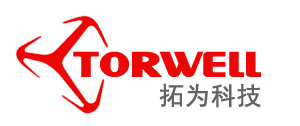Challenges Faced by Users of the Best PLA Plastic Filament
Table of Contents
- Challenges in Identifying High-Quality PLA Filament Manufacturers
- Key Factors to Consider When Choosing PLA Filament Suppliers
- Common Issues Users Encounter with PLA Filament Performance
- Data-Driven Solutions to Enhance PLA Filament Quality
- Technical Insights: Understanding PLA Filament Specifications and Variability
- Best Practices for Optimizing PLA Filament Usage in 3D Printing Projects
- FAQS
- Related Posts
You know, the 3D printing world is really booming right now, and one of the big trends we're seeing is a huge uptick in the demand for quality PLA Plastic Filament. People are loving it for its eco-friendly vibe and how easy it is to work with. In fact, a report from Smithers Pira predicted that the global 3D printing market could hit a whopping $34.8 billion by 2024, and PLA is definitely a key player in that growth. But, let's be real, many users run into some pretty frustrating challenges, like figuring out which printers are compatible, getting the filament to stick properly, and ensuring the print quality is what they expect—especially since different brands and types can vary so much.

Here at Torwell Technologies Co., Ltd., which we've been rocking since 2011, we're all about tackling these hurdles with top-notch research and manufacturing. Our 2,500 square meter factory cranks out around 50,000 kilograms of high-quality PLA Plastic Filament every month, so we can keep up with demand without sacrificing quality. In this blog, we’re going to dive into the common challenges users face with PLA Filament and offer some useful comparisons to help you make smarter choices for your 3D printing adventures!
Challenges in Identifying High-Quality PLA Filament Manufacturers
So, let’s talk about 3D printing for a sec. Picking the right PLA filament is, like, super important if you want to get the best results out there. But here's the thing: finding good quality filament manufacturers can be a real headache. With so many brands popping up everywhere, it feels impossible to figure out which ones actually deliver on things like consistency, durability, and those bright, eye-catching colors we all love. A lot of companies talk a big game about their products, so it's crucial to do your homework—check out reviews, look for certifications, or even compare different brands to get a better sense of their filament quality.
And don’t get me started on the transparency, or lack thereof, in some manufacturing processes! It can be tricky because a lot of manufacturers don’t give enough info about what’s in their materials or how they make them. That can really throw up some red flags when you think about how the filament will perform—or even its impact on the environment. To tackle these challenges, it's best to look for manufacturers who are open about their product specs and who have built a solid rep within the 3D printing world. Joining forums or online groups can be a goldmine for advice and tips, making your journey to finding top-notch PLA filament way easier.
Key Factors to Consider When Choosing PLA Filament Suppliers
So, when you’re on the hunt for PLA filament suppliers, there are a few important things you really need to think about if you want to have a smooth 3D printing ride. First off, let’s talk about filament quality. You want high-grade PLA that prints beautifully, doesn’t warp, and has a consistent diameter—it’s super important for getting those prints just right. A lot of users have run into headaches with cheaper filaments, like clogs and uneven extrusion. That’s why it’s a good idea to stick with trustworthy suppliers who provide solid specs and have positive user reviews. It really helps to sidestep those pitfalls.
Another thing to keep in mind is the variety of PLA filaments they offer. Depending on what you’re working on, you might be looking for something a bit more specialized, like PLA+, which is tougher and a bit more flexible than the standard option. Plus, having a bunch of colors and finishes can really inspire your creative projects, right? And let’s not forget about customer service. A supplier that’s there to help—offering knowledgeable support for troubleshooting or picking out the right filament for your needs—can make all the difference in your printing journey.
Common Issues Users Encounter with PLA Filament Performance
When it comes to 3D printing with PLA filament, users often face a variety of challenges that can hinder overall performance. One common issue is warping, which occurs during the cooling process. If the print bed is not adequately prepared or heated, the corners of the print may lift, leading to an uneven finish. To mitigate this, ensuring that the print bed is level and properly calibrated can make a significant difference. Additionally, using a heated bed or applying adhesives like glue stick or painter's tape can help enhance adhesion.
Another frequent concern is stringing, where thin strands of filament are left between printed parts. This can be frustrating and affect print quality. To combat stringing, users should experiment with retraction settings in their slicer software, adjusting the retraction distance and speed. Reducing print temperature slightly can also decrease the chances of filament oozing.
Finally, users might encounter inconsistent extrusion, which results in uneven layers and gaps in prints. This can often be traced back to the feeding mechanism or the quality of the filament. Regularly cleaning the nozzle and ensuring that the filament is dry can improve consistency. Investing in a filament dryer or storing PLA filament in airtight containers can help maintain the integrity of the material over time.

Data-Driven Solutions to Enhance PLA Filament Quality
When it comes to utilizing PLA plastic filament for 3D printing, users often encounter several challenges that can affect the quality of their prints. Common issues include inconsistent extrusion, warping, and brittleness. However, embracing data-driven solutions can significantly enhance PLA filament quality, leading to better printing experiences.
To tackle extrusion inconsistencies, monitoring temperature and flow rates during the printing process is essential. By collecting data on the filament's performance with different nozzle temperatures, users can identify the optimal settings for their specific printer models. Additionally, utilizing advanced moisture sensors can help in determining the humidity levels that might affect filament quality, as PLA is sensitive to moisture absorption.
In terms of warping and brittleness, implementing software tools that analyze print settings and environmental factors can make a notable difference. By collecting real-time data on ambient temperature and layer adhesion, users can adjust their print parameters proactively. This not only helps in achieving stronger layers but also minimizes issues like lifting corners and unsightly defects. By leveraging data to refine printing strategies, users can enhance the overall quality of their PLA prints and ensure a successful printing process.

Technical Insights: Understanding PLA Filament Specifications and Variability
So, let’s talk about PLA filament—also known as Polylactic Acid. It really is popular because it's easy to use and friendly to the environment. But hey, it's not all sunshine and rainbows; there are some challenges that you’ve got to deal with when printing. Knowing the ins and outs of PLA filament specifications is super important if you want your prints to come out just right. For example, the diameter of PLA can vary a bit, usually sitting between 1.75mm and 3.0mm. And get this: the tolerances can seriously affect how well your printer feeds the filament and the overall precision of your prints. Industry insights say that keeping that diameter consistent within ±0.05mm is a must, because even tiny fluctuations can cause nasty clogs or those annoying inconsistencies during printing.
Oh, and don’t overlook the fact that PLA's thermal properties can really impact how it performs. The glass transition temperature is around 60°C, which means it can start to warp if it gets too hot. A common practice is to print at temperatures between 190°C and 220°C, but honestly, finding that sweet spot often feels like playing a game of trial and error since different manufacturers have their own special formulas. Plus, some studies have shown that adding various materials can boost strength and flexibility, but then you've got to worry about how that’ll mess with your print results. So yeah, it’s definitely crucial to grasp the specific specs of whichever PLA filament you choose to roll with to avoid any hiccups!
Best Practices for Optimizing PLA Filament Usage in 3D Printing Projects
So, when you’re working with PLA filament for 3D printing, getting your workflow right can really amp up print quality and help you dodge those pesky common issues. One big tip is to make sure your printer's nozzle temperature is spot on according to what the filament recommends—usually somewhere between 190°C and 220°C. Keeping that temperature consistent can really help avoid problems like under-extrusion or stringing, which honestly, a lot of people run into. And hey, if you dial down the print speed a bit, that can boost layer adhesion and make your final prints look a lot nicer, too.
Another thing to keep in mind is how you store your PLA filament. It’s a bit of diva—being hygroscopic means it loves to soak up moisture from the air, which can lead to all sorts of print headaches, like bubbling or bad layer adhesion. So, keeping it in a dry spot, preferably in a sealed bag with some desiccants, can really help extend its shelf life and keep your prints running smoothly. Plus, don’t forget to regularly calibrate your 3D printer—level that print bed and check your extrusion multiplier! These little tweaks go a long way in ensuring you get reliable and high-quality prints with PLA filament. By following these tips, you’ll likely find that many of the usual headaches with PLA just fade away, making your 3D printing journey a lot more enjoyable.
FAQS
filament?
A consistent diameter within ±0.05mm is essential to prevent clogs and ensure print precision during the printing process.
The glass transition temperature for PLA is around 60°C, which makes it susceptible to deformation under heat.
The recommended printing temperature for PLA filament is between 190°C to 220°C.
Users can enhance strength and flexibility by adding different additives to the PLA filament, but they should be aware that this may introduce variability in print outcomes.
Setting the nozzle temperature according to filament specifications, typically between 190°C to 220°C, can help prevent issues like under-extrusion or stringing.
PLA filament should be stored in a dry environment, ideally in a sealed bag with desiccants, to prevent moisture absorption, which can cause print defects.
Regular calibration, including leveling the print bed and verifying the extrusion multiplier, helps achieve reliable and high-quality prints with PLA filament.
Slowing down the print speed can improve layer adhesion and surface finish, resulting in a more visually appealing final product.
Common issues include clogs, under-extrusion, and poor layer adhesion, which can be mitigated by maintaining proper temperature settings, storage, and regular printer calibration.
Blog Tags:






